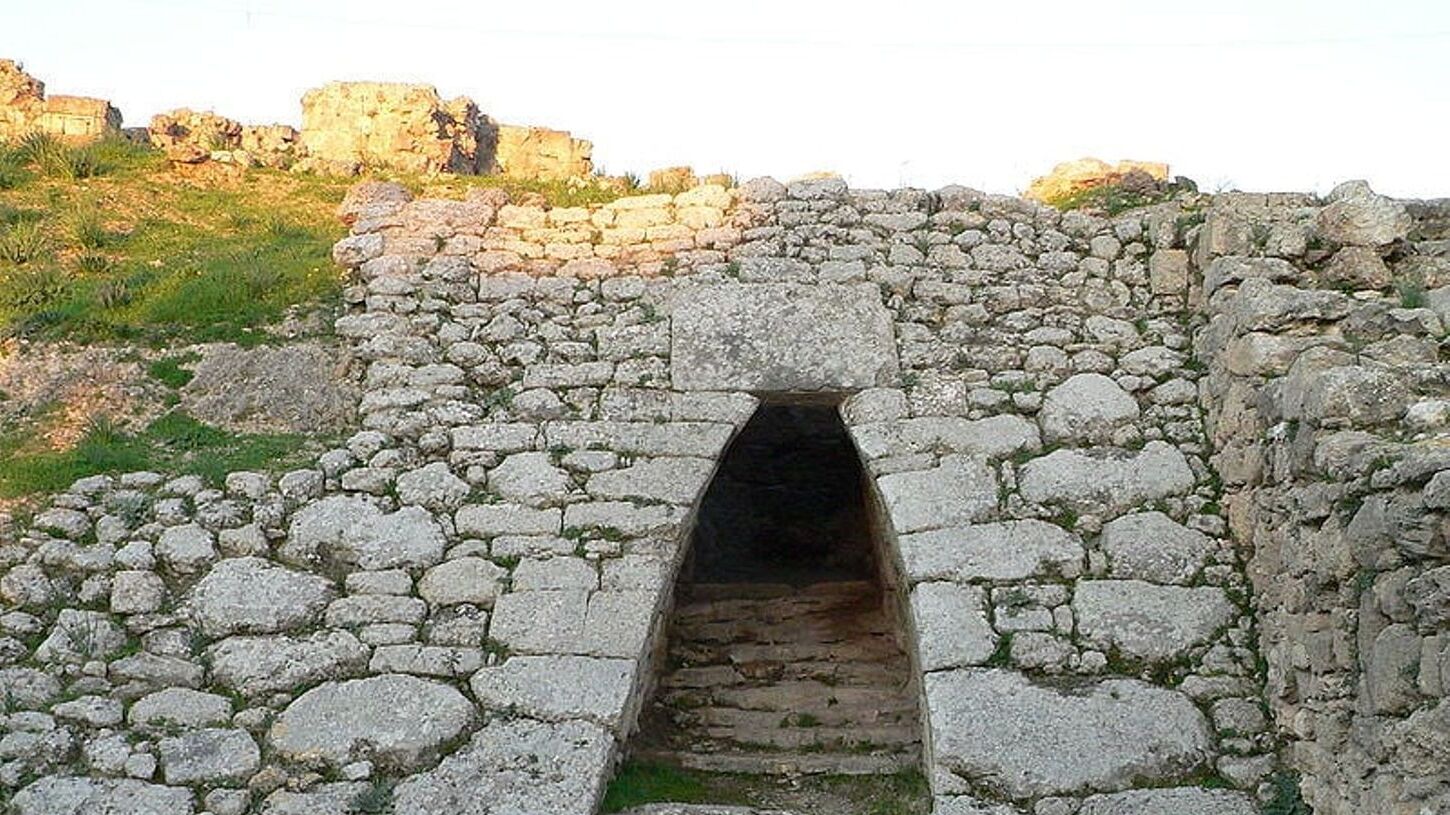
Ugarit, an ancient city on Syria's northern coast, was a bustling hub of trade and culture in the second millennium BCE. Its strategic location made it a vital link between civilizations from the Aegean to Mesopotamia. However, around 1200 BCE, Ugarit faced a series of catastrophic events that led to its downfall. What caused the destruction of Ugarit? A combination of natural disasters, invasions by the "Sea Peoples," and internal vulnerabilities. Rediscovered in the early 20th century, Ugarit's ruins have provided invaluable insights into ancient urban planning, trade, and culture. This article explores 25 key facts about the rise and fall of this remarkable city.
Key Takeaways:
- Ugarit, an ancient city in Syria, was a bustling trade hub with diverse cultures and advanced urban planning. Despite its tragic end, its legacy lives on through archaeological discoveries, enriching our understanding of history.
- Ugarit's rich heritage included royal tombs, diverse deities, and even musical notations. Its catastrophic end in 1200 BCE, due to natural disasters and invasions, led to its rediscovery in the 20th century, providing valuable insights into the ancient world.
The Rise and Significance of Ugarit
Ugarit, an ancient city on the northern coast of modern Syria, was a bustling hub of trade and culture in the second millennium BCE. Its strategic location made it a key player in the ancient world.
-
Location and Significance: Ugarit was situated in a mound known as Ras Shamra, on the Mediterranean coast of northern Syria. Its strategic location at the junction of trade routes made it one of the first great international ports, facilitating the exchange of goods and ideas between various civilizations.
-
Occupation and Trade: Occupied for over 4,000 years, Ugarit flourished as a cosmopolitan city with a diverse population. The city's economy was driven by its role as a major supplier and transporter of food supplies, as well as its involvement in maritime and land-based trade networks.
-
Cultural Diversity: The tablets found at Ugarit contain writings in various languages, including Ugaritic, Akkadian, Sumerian, Hurrian, and Egyptian. This multilingual society reflects the city's cosmopolitan nature and its role as a cultural melting pot.
The Rich Cultural Heritage of Ugarit
Ugarit was not just a trade hub; it was also a center of cultural and religious activities. The city's archaeological finds provide a glimpse into its rich heritage.
-
Royal Tombs: The royal tombs of Ugarit are some of the most remarkable archaeological finds. These tombs contained rich burial offerings, including precious metals, jewelry, weapons, and elaborate pottery, providing insights into the lavish funerary practices of the Ugaritic elite.
-
Deities and Worship: Ugarit was home to a diverse range of deities worshipped by its inhabitants. The city’s main god was El, the supreme deity in the Ugaritic pantheon, but other gods like Baal, Anat, and Asherah were also revered and had their own temples.
-
Musical Notations: One of the fascinating discoveries at Ugarit was the remains of a musical notation system. These notations, written on clay tablets, provide evidence of the earliest-known musical compositions in history.
Ugarit as an International Trade Hub
Due to its strategic location on the Mediterranean, Ugarit was a significant hub for international trade. The city maintained flourishing maritime and land-based trade networks, which brought wealth and cultural exchange to the region.
-
International Trade Hub: Ugarit was a significant hub for international trade. The city maintained flourishing maritime and land-based trade networks, which brought wealth and cultural exchange to the region.
-
Maritime Power: As a coastal city, Ugarit developed a formidable maritime fleet. Its ships played a crucial role in trade, exploration, and maintaining connections with neighboring regions.
-
Advanced Urban Planning: Ugarit showcased remarkable urban planning with well-designed streets, impressive architecture, and a sophisticated water management system. These innovations demonstrate the engineering and architectural prowess of the Ugaritic civilization.
The Catastrophic End of Ugarit
Despite its prosperity, Ugarit faced a series of catastrophic events that led to its eventual destruction around 1200 BCE.
-
Destruction by Cataclysmic Events: Ugarit met its tragic end due to a combination of earthquakes, fires, and invasions. The city was violently destroyed around 1200 BCE, and its ruins were buried under layers of debris until their rediscovery centuries later.
-
Rediscovery in the 20th Century: Ugarit’s ancient ruins were re-discovered in the early 20th century by French archaeologists, sparking renewed interest in the site and leading to extensive excavations that are still ongoing today.
-
Bronze Age Civilization: Ugarit was part of the vibrant Bronze Age civilization, which saw advancements in metallurgy, trade, and cultural exchange. The city played a crucial role in the trade routes connecting the civilizations of the ancient Near East.
The Language and Literature of Ugarit
The Ugaritic language and literature have provided valuable insights into the ancient world, influencing our understanding of early Semitic languages.
-
The Ugaritic Language: The Ugaritic language, known from its written records, has provided linguists with a valuable source for studying the development of ancient Semitic languages and has shed light on the roots of many modern languages spoken today.
-
Cuneiform Tablets: Thousands of clay tablets were discovered throughout the ruins of Ugarit. These tablets contained economic, legal, diplomatic, and administrative texts in eight languages, written in five scripts. The inscriptions in a hitherto unknown language—Ugaritic—using 30 cuneiform signs, made up one of the oldest alphabets ever discovered.
-
Curse Tablets: Among the artifacts discovered at Ugarit are “curse tablets.” These were small tablets inscribed with curses against enemies, seeking divine retribution for perceived wrongs.
The Final Days of Ugarit
The last days of Ugarit were marked by desperation and military struggles, as the city faced severe challenges from both natural and human forces.
-
Food Shortages and Desperation: From the late 13th century into the early 12th century BCE, the entire region faced severe and widespread food shortages, potentially from plant diseases. Ugarit received desperate pleas for food from other realms, highlighting its role as a major supplier and transporter of food supplies.
-
Ammurapi’s Plea: The last king of Ugarit, Ammurapi, wrote a letter to the Egyptian pharaoh Merenptah, pleading for assistance due to the severe hunger in Ugarit. This letter underscores the city's vulnerability and the desperation of its ruler during this period.
-
Military Involvement: Ugarit possessed a large army and navy, which joined with Hittite forces to try and stem the oncoming enemy. However, the city's troops and fleet were requisitioned by the Hittites, leaving Ugarit defenseless against the invading “Sea Peoples”.
-
Destruction Date: The destruction of Ugarit is generally agreed to have occurred between 1192 and 1190 BCE. This date is supported by radiocarbon work, historical dates, and the eclipse of January 21, 1192.
Archaeological Discoveries at Ugarit
Excavations at Ugarit have uncovered remarkable artifacts and structures that provide a glimpse into the city's advanced civilization.
-
Archaeological Evidence: Excavations at Ugarit have uncovered the remains of an immense palace complex with almost a hundred rooms and courtyards. The complex had running water, bathrooms, and a sewage system, demonstrating the advanced engineering skills of the Ugaritic civilization.
-
Temple Towers: The city and the surrounding plain were dominated by the temples of Baal and Dagan. These temple towers, perhaps 60 feet tall, consisted of a small vestibule leading to an inner room that housed an image of the god. A staircase led up to a terrace where the king officiated at various ceremonies.
-
Votive Offerings: Sailors who attributed their safe return to the storm god Baal-Hadad made votive offerings of 17 stone anchors found in his sanctuary. This practice highlights the religious significance of the sea gods in Ugaritic culture.
-
Notable Artistic Expressions: The Ugaritic civilization produced exquisite works of art, including intricate jewelry, pottery, and sculptures, showcasing their mastery of various artistic techniques and capturing the essence of their beliefs and culture.
-
The Cult of the Dead: Ugarit had a strong belief in the afterlife, and the funerary practices reflected this. Elaborate tombs, offerings, and rituals were conducted to ensure the well-being of the deceased in the afterlife.
-
Legacy and Rediscovery: Uncovering the secrets of Ugarit provides historians and archaeologists with a unique window into the ancient world. The discoveries made in Ugarit continue to enrich our understanding of the history, culture, and language of this fascinating civilization. Despite its tragic end, Ugarit's legacy lives on through its archaeological remains and the insights they offer into a bygone era.
The Legacy of Ugarit's Fall
Ugarit's destruction was a perfect storm of natural disasters, invasions, and internal strife. This ancient city, once a bustling hub of trade and culture, met its end around 1200 BCE. Earthquakes, fires, and the feared "Sea Peoples" played their parts in its downfall. Despite its tragic end, Ugarit's contributions to history are immense. From advanced urban planning to the earliest-known musical notations, the city's legacy is rich. The rediscovery of Ugarit in the 20th century has given us a treasure trove of knowledge about ancient civilizations. Its multilingual society, impressive architecture, and vibrant trade networks paint a vivid picture of a once-great city. Ugarit's story is a reminder of the fragility of civilizations and the enduring impact they can have on history. The ongoing excavations continue to reveal more about this fascinating city, ensuring its legacy lives on.
Frequently Asked Questions
Was this page helpful?
Our commitment to delivering trustworthy and engaging content is at the heart of what we do. Each fact on our site is contributed by real users like you, bringing a wealth of diverse insights and information. To ensure the highest standards of accuracy and reliability, our dedicated editors meticulously review each submission. This process guarantees that the facts we share are not only fascinating but also credible. Trust in our commitment to quality and authenticity as you explore and learn with us.


